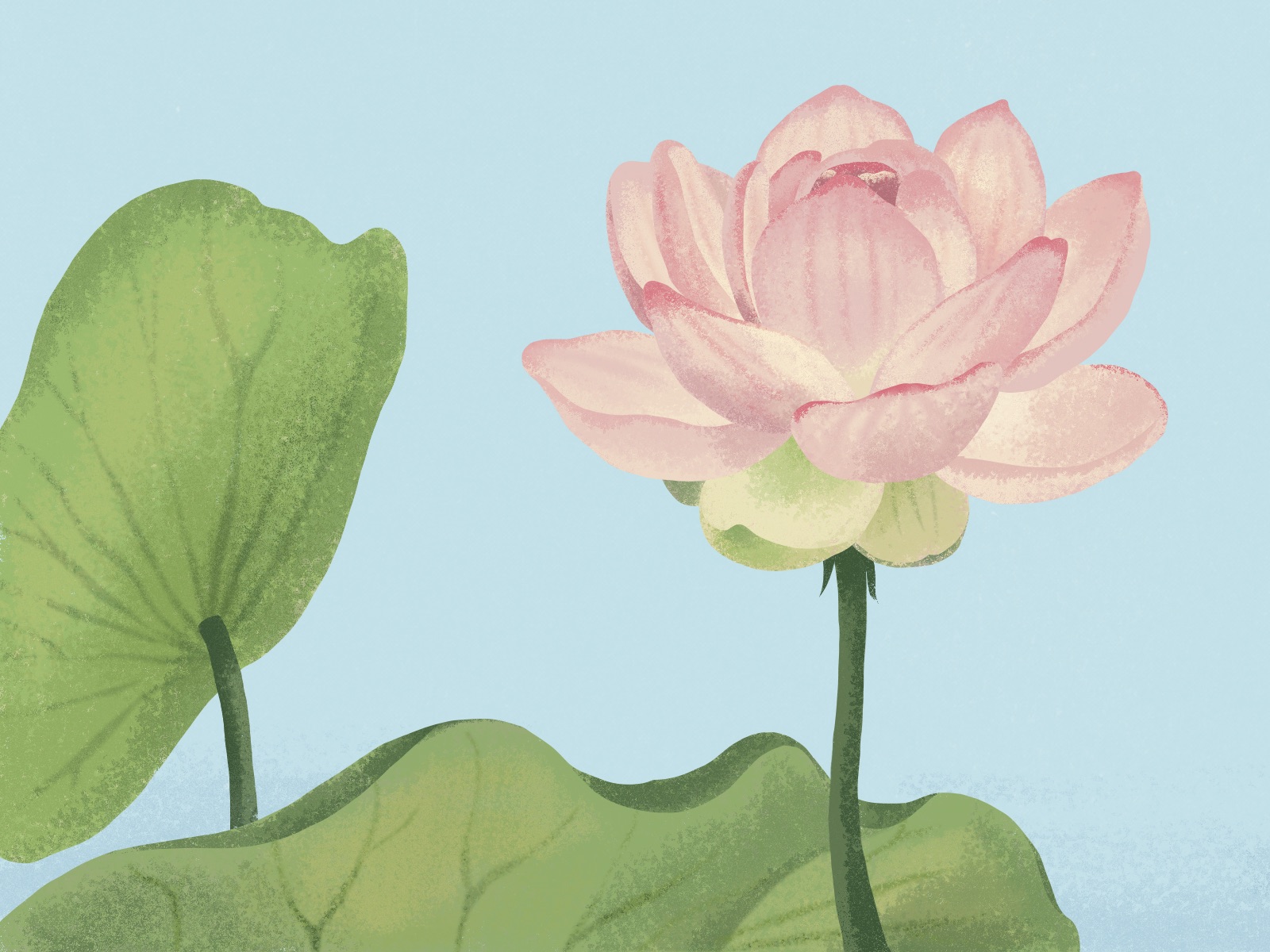Best of the Haiku Challenge (July 2023)
Announcing the winning poems from Tricycle’s monthly challenge The post Best of the Haiku Challenge (July 2023) appeared first on Tricycle: The Buddhist Review.

Season words like “lotus” can be difficult to write about because they also function as religious symbols. A word with that much weight can capsize the 17-syllable vessel of a haiku. The winning and honorable mention poems for last month’s challenge took a playful approach to the seasonal theme, working with the lotus as a symbol of the enlightened mind, but without becoming overwhelmed by that idea.
Marcia Burton finds in the lotus symbol imprinted on her yoga mat a much-needed serenity in the midst of daily life. Nancy Winkler’s pure white flower displays a wisdom that, ironically, could only be found in the murky depths.Lorraine A. Padden contrasts the unscathed beauty of the lotus with Orpheus, a mythical hero whose journey through the underworld left him broken and alone.
Congratulations to all! To read additional poems of merit from recent months, visit our Tricycle Haiku Challenge group on Facebook.
You can submit a haiku for the August challenge here.
WINNER:
on the yoga mat
lotus flower opening
and closing again
— Marcia Burton
Haiku are inherently playful—after all, the word means literally “humorous verse.” But that doesn’t mean that haiku are light on meaning or lacking in nuance. There are many levels of play.
The following verse, which was also submitted by this month’s winning poet, plays off the notion of the lotus as a symbol of the enlightened mind.
keeping her shirt clean
despite playing in the mud
a lotus flower
Religious symbolism tends to be ponderous or heavy-handed, for which reason a haiku poet will usually find some way to lighten it up—as when Issa describes a swallow flying out of the nostril of the giant bronze Buddha at Kamakura.
Here the poet compares the lotus to a young girl frolicking in the mud who, nevertheless, somehow manages to keep her shirt immaculately clean. The image is delightful, if not mildly satirical. Without a sense of humor, the quest for enlightenment can devolve into a punishing, joyless affair.
All that being said, this month’s winning poem employed a deeper, simpler style of play.
There are no real lotuses in the poet’s life—no actual flowers growing from the muddy bed of a nearby lake or pond. The only lotus she can think of is the logo emblazoned on her yoga mat, its weekly “blossoming” confined to the length of a class. She unrolls the mat, and the flower opens. At the end of the class, it closes again.
To find a lotus “opening and closing” on a yoga mat is the essence of haiku humor. It is the poet’s way of acknowledging that her life has too little space for contemplation—and, at the same time, expressing gratitude for the single hour of serenity she can find in the midst of an otherwise stressful week.
This is playful, too, no doubt. But it is play of another order. I read this poem as a subtle but honest commentary on the challenges of spiritual practice in modern life.
HONORABLE MENTIONS:
what the lotus found
in the dark watery depths
is on full display
— Nancy Winkler
another lotus
unlike the poor Orpheus
arises unscathed
— Lorraine A. Padden
♦
You can find more on July’s season word, as well as relevant haiku tips, in last month’s challenge below:
Summer season word: “lotus”
there must be something
living in the dark water
that eats lotuses
I saw white lotus flowers floating atop a pond on my visit to a Buddhist temple. I asked a monk what became of them when their season was over, but he didn’t know. “They just disappear,” he said.
Submit as many haiku as you wish that include the summer season word “lotus.” Your poems must be written in three lines of 5, 7, and 5 syllables, respectively, and should focus on a single moment of time happening now.
Be straightforward in your description and try to limit your subject matter. Haiku are nearly always better when they don’t have too many ideas or images. So make your focus the season word* and try to stay close to that.
* REMEMBER: To qualify for the challenge, your haiku must be written in 5-7-5 syllables and include the word “lotus.”
Haiku Tip: Return To The Spirit Of Play!
poets took turns adding “capping verses” to one another’s poems. By the 17th century, this game had become a series of weekly contests held throughout Japan. A referee would issue a “challenge verse” of 7-7 syllables and participants from all walks of life would submit 5-7-5 syllable “caps,” hoping to be selected as the winner.
These 17-syllable verses ran such a broad gamut that it is hard to categorize them today. They could be sublime, profound, witty, funny, dirty, or even scandalous. At the turn of the 20th century, the literary reformer Masaoka Shiki abandoned this freewheeling approach to haiku in the effort to establish it as a serious artform.
Shiki and his followers advocated “objective description,” producing haiku that were grounded in concrete images drawn from nature. Many of these poems are considered masterpieces today. But they were rarely playful. By the mid-20th century, poets had begun to rebel, reintroducing elements of haiku that had been suppressed by the Shiki School.
Haiku has rebounded since then. We live in an age of short-form digital communication that encourages spontaneity, diversity, and freedom of self-expression—values that are reshaping haiku for the 21st-century. Ironically, today’s haiku are closer in spirit to the type of haiku that Shiki rejected.
Humor, melancholy, joy, grief, provocation, celebration, satire, longing, revulsion, philosophical musing—there are no limits on what can be communicated in 5-7-5. At its most basic, a haiku is whatever you can get away with in 17 syllables. This is the only rule that holds true across the entire history of haiku.
—from #5 in the series Haiku in English: 17 Essential Points, by Clark Strand & Susan Polizzotto
A note on lotuses: The lotus is a symbol of enlightenment in Buddhism, because its roots grow from the mud of a lake or river bottom, but the flower that opens atop the water is a spotless pink or white. Lotus seeds can lie dormant for years in silt or dry mud before germinating during a flood. The oldest seeds to germinate through rehydration were 1,300 years old.
There is something transcendent about the lotus in Buddhist literature, even though it remains firmly attached to this world. But the word can be used in other ways. In the poem below it expresses the “Other Power” doctrine of Pure Land Buddhism, which states that sentient beings cannot attain Buddhahood through their own effort.
the lotus rises
but it’s the water that does
the heavy lifting

 Koichiko
Koichiko 
































